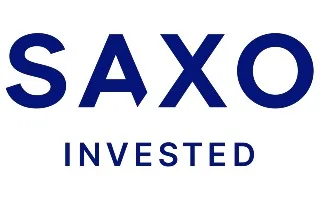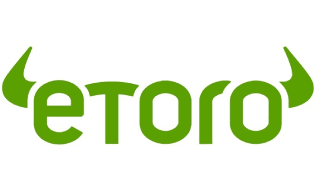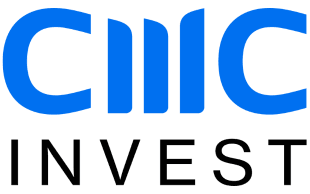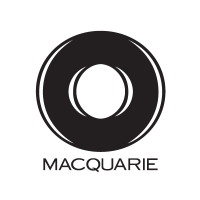A$9.04
Sandfire Resources is a copper business based in Australia. Sandfire Resources shares (SFR) are listed on the Australian Securities Exchange (ASX) and all prices are in Australian dollars. Sandfire Resources has a trailing 12-month revenue of around $796.3 million. If you're looking to buy shares, check out the steps below.
How to buy shares in Sandfire Resources
To buy shares listed in Australia such as Sandfire Resources, you'll need to sign up to a broker with access to the ASX. Our table can help you compare share trading platforms and choose. Then follow these steps.
-
Open and fund your brokerage account. Complete an application with your personal and financial details, including your ID and tax file number. Fund your account with a bank transfer, PayPal or debit card.
-
Search for Sandfire Resources. Find the share by name or ticker symbol: SFR. Research its history to confirm it's a solid investment against your financial goals.
-
Purchase now or later. Buy today with a market order or use a limit order to delay your purchase until Sandfire Resources reaches your desired price. Look into dollar-cost averaging to spread out your risk, which smooths out buying at consistent intervals and amounts.
-
Decide on how many to buy. At today's price, weigh your budget against a diversified portfolio that can minimise risk through the market's ups and downs.
-
Check on your investment. Congratulations, you own a part of Sandfire Resources. Optimise your portfolio by tracking how your stock and the business performs with an eye on the long term. You may be eligible for dividends and shareholder voting rights on directors and management that affect your stock.
Our top pick for
Best for beginner

Our top pick for
Education & learning

Our top pick for
Australian stocks

Sandfire Resources stock price (ASX:SFR)
Use our graph to track the performance of SFR stocks over time.Sandfire Resources shares at a glance
| 52-week range | $5.46 - $9.28 |
|---|---|
| 50-day moving average | $8.0992 |
| 200-day moving average | $6.8361 |
| Target price | $8.22 |
| PE ratio | N/A |
| Dividend yield | N/A (0%) |
| Earnings per share (TTM) | $-0.07 |
Compare share trading platforms
Is it a good time to buy Sandfire Resources stock?
The technical analysis gauge below displays real-time ratings for the timeframes you select. However, this is not a recommendation. It represents a technical analysis based on the most popular technical indicators: Moving Averages, Oscillators and Pivots. Finder might not concur and takes no responsibility.
Sandfire Resources price performance over time
Historical closes compared with the last close of A$9.04
| 1 week (2024-04-12) | -0.33% |
|---|---|
| 1 month (2024-03-19) | 6.10% |
| 3 months (2024-01-19) | 38.23% |
| 6 months (2023-10-19) | 52.45% |
| 1 year (2023-04-19) | 28.23% |
|---|---|
| 2 years (2022-04-19) | 58.60% |
| 3 years (2021-04-19) | 51.68% |
| 5 years (2019-04-18) | 23.50% |
Is Sandfire Resources under- or over-valued?
Valuing Sandfire Resources stock is incredibly difficult, and any metric has to be viewed as part of a bigger picture of Sandfire Resources's overall performance. However, analysts commonly use some key metrics to help gauge the value of a stock.
Sandfire Resources's PEG ratio
Sandfire Resources's "price/earnings-to-growth ratio" can be calculated by dividing its P/E ratio by its growth – to give 0.5. A low ratio can be interpreted as meaning the shares offer better value, while a higher ratio can be interpreted as meaning the shares offer worse value.
The PEG ratio provides a broader view than just the P/E ratio, as it gives more insight into Sandfire Resources's future profitability. By accounting for growth, it could also help you if you're comparing the share prices of multiple high-growth companies.
Sandfire Resources's EBITDA
Sandfire Resources's EBITDA (earnings before interest, taxes, depreciation and amortisation) is $223.9 million (£0.0 million).
The EBITDA is a measure of a Sandfire Resources's overall financial performance and is widely used to measure stock profitability.
Sandfire Resources financials
| Revenue TTM | $796.3 million |
|---|---|
| Gross profit TTM | $454.6 million |
| Return on assets TTM | -0.6% |
| Return on equity TTM | -4.64% |
| Profit margin | -9.75% |
| Book value | 3.647 |
| Market capitalisation | $4.2 billion |
TTM: trailing 12 months
Sandfire Resources share dividends
We're not expecting Sandfire Resources to pay a dividend over the next 12 months.
Have Sandfire Resources's shares ever split?
Sandfire Resources's shares were split on a 1.0472:1 basis on 26 July 2009. So if you had owned 1 share the day before the split, the next day you would own 1.0472 shares. This wouldn't directly have changed the overall worth of your Sandfire Resources shares – just the quantity. However, indirectly, the new 4.5% lower share price could have impacted the market appetite for Sandfire Resources shares which in turn could have impacted Sandfire Resources's share price.
Sandfire Resources share price volatility
Over the last 12 months, Sandfire Resources's shares have ranged in value from as little as $5.46 up to $9.28. A popular way to gauge a stock's volatility is its "beta".
Beta measures a share's volatility in relation to the market. The market (AU average) beta is 1, while Sandfire Resources's is 1.551. This would suggest that Sandfire Resources's shares are more volatile than the average for this exchange and represent, relatively speaking, a higher risk (but potentially also market-beating returns).
Sandfire Resources overview
Sandfire Resources Limited, a mining company, engages in the exploration, evaluation, and development of mineral tenements and projects. It primarily explores for copper, gold, silver, lead, and zinc deposits. Sandfire Resources Limited was incorporated in 2003 and is based in West Perth, Australia.
Stocks similar to Sandfire Resources
ANZ Group Holdings Ltd. Pfd.

AUD101.63
ANZ Group Holdings Ltd. Pfd.

AUD104.30
Challenger Ltd Preferred

AUD105.12
Macquarie Group Ltd Pref C

AUD103.11
Macquarie Group Ltd Pref

AUD105.59
Macquarie Group Preferred

AUD102.90
Suncorp Group Ltd Pref

AUD100.70
Westpac Banking Corp Pref

AUD103.15
Whitefield Ltd Pref B

AUD98.62
Sandfire Resources in the news

Sandfire Resources First Half 2024 Earnings: US$0.12 loss per share (vs US$0.065 loss in 1H 2023)

An Intrinsic Calculation For Sandfire Resources Limited (ASX:SFR) Suggests It's 38% Undervalued

Those who invested in Sandfire Resources (ASX:SFR) three years ago are up 62%
Frequently asked questions
More guides on Finder
-
How to invest in the Tasmea Limited IPO
Everything we know about the Tasmea Limited IPO, plus information on how to buy in.
-
How to buy Blinklab shares
Steps to owning and managing Blinklab shares.
-
How to invest in the Maverick Minerals IPO
Everything we know about the Maverick Minerals IPO, plus information on how to buy in.
-
How to buy Far Northern Resources shares
Steps to owning and managing Far Northern Resources shares.
-
What are the best commodity ETFs on the ASX in 2024?
Commodity ETFs can be used to hedge against inflation. Here's what they do, why they should be on your watchlist and how they can help your portfolio.
-
Best performing stocks on the ASX in 2024 (Updated weekly)
Looking for the best performing stocks in Australia? We update this list weekly.
-
How to buy Gol Linhas Aereas Inteligentes SA ADR (GOL) shares in Australia
Steps to owning and managing Gol Linhas Aéreas Inteligentes SA shares from Australia.
-
Superhero review: ASX and US share trading app
Trade ASX stocks and ETFs with a flat $2 brokerage fee and a low minimum investment of just $10.
-
The cheapest ETFs on the ASX
These ETFs have the lowest fees on the market, but does that make them the best?
-
Alternatives to CommSec: 7 trading platforms to consider
You've heard of CommSec but how does it stack up to the likes of IG, CMC Invest and other players in the market?
Ask a Question